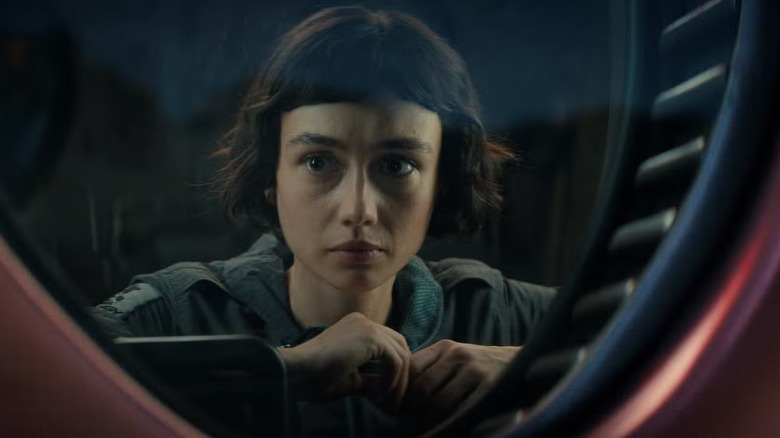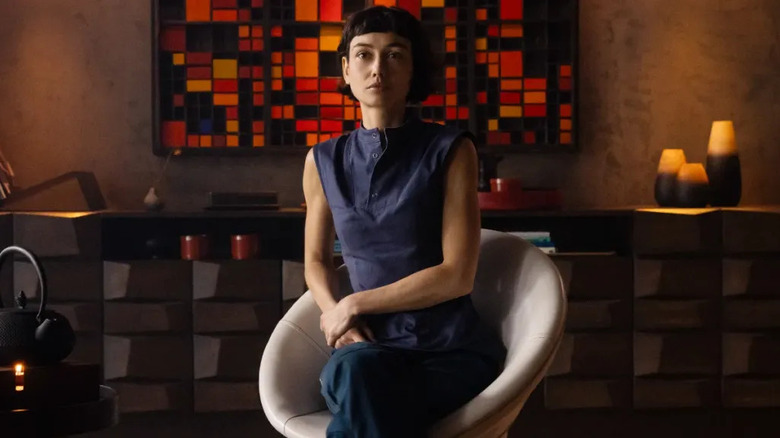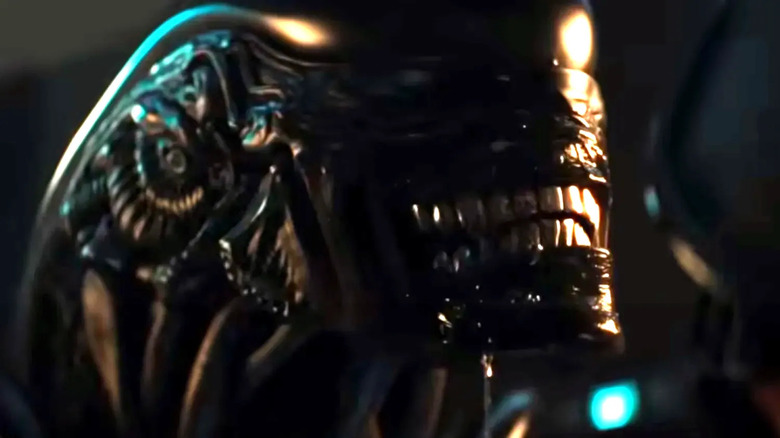We may receive a commission on purchases made from links.
Spoilers follow.
Since the release of “Prometheus” in 2012, the “Alien” franchise has been lingering on the prequel side of the story, with the aforementioned film as well as “Alien: Covenant” and “Alien: Romulus” taking place before or just after the original “Alien.” Yet this doesn’t mean that the films have been content with merely rehashing concepts seen in the earlier movies, nor have they spent any time setting up characters and/or plot points to be developed in the stories that are set in their future. Instead, these prequels have continued the unspoken creative mandate established by the original four films by further exploring the possibilities inherent in a universe that contains Xenomorphs and synthetic beings while making each project feel unique and personalized. Noah Hawley’s “Alien: Earth” series is the latest example of this. While it certainly pays due homage to the world of Ridley Scott’s 1979 original (especially given how it’s set two years before the events of that film), “Earth” is absolutely Hawley’s show.
Homage doesn’t only refer to surface-level references, however. “Prometheus” cleverly expanded the “Alien” universe by returning to its literal roots, as Scott mined a variety of concepts (both visual and narrative) that were originally created for the first film but ultimately abandoned. For instance, the pyramid where a good portion of the film takes place borrows its design from H.R. Giger’s original concept for the derelict in the first “Alien,” back when early versions of that script had the famous facehugger encounter take place in a pyramid structure instead of the ship it eventually became. This is one example of how the general approach to these “Alien” prequels have allowed them to feel as vital and fresh as the sequels; the artists aren’t regurgitating what’s already been seen, but remixing and revitalizing elements that almost were.
Now, in “Alien: Earth,” Hawley has performed a neat hat trick with one plot development. As seen in episode 4 (entitled “Observation”), the synthetic hybrid Wendy (Sydney Chandler) has put together data that she’s been observing and collecting since the start of the series in order to be able to speak an approximation of the Xenomorph’s language. This plot point not only recalls a similar thread in “Alien: Resurrection,” but also connects to a deleted bit of dialogue from the original “Alien.” It’s an element which both adds a whole new dimension to the “Alien” mythos while also remaining true to the series’ origins.
Wendy tries what Ash (originally) suggested
In J.W. Rinzler’s 2019 book “The Making of Alien,” numerous extracts from the various drafts of the script are included. In one passage quoted from the June, 1978 Revised Final Screenplay by Walter Hill, David Giler, Dan O’Bannon and Ronald Shusett, during the scene in which Ripley (Sigourney Weaver) and her remaining crew confront the now disembodied head of the secret synthetic on board, Ash (Ian Holm), the robot has some additional thoughts about the Xenomorph loose on the Nostromo. After describing how the Alien is a “perfect organism” as he does in the final film, Ash says: “Maybe it’s intelligent. Maybe you should try to communicate with it.” When Ripley responds to this by asking if that’s something Ash tried, the synthetic is once again ominously elusive: “Please let my grave hold some secrets,” he says.
It’s an idea compelling enough to make the actress who portrayed Lambert, Veronica Cartwright, lament its exclusion from the final film when interviewed for “The Beast Within: The Making of Alien” on the Blu-Ray and 4K releases. Ironically, it took a long time for anyone else to agree with her: despite Ripley’s obvious cleverness, she rarely has the time or the inclination to try and speak to the Xenomorphs that she encounters, and only engages in a little non-verbal communication here and there. When she finally does speak to the Alien in “Alien 3,” it’s less an invitation to a dialogue and more a prayer or a plea. Leaving Ripley aside, no character attempts any sort of communication with the Xenomorphs until “Alien: Resurrection” (more on that in a moment). The synthetic David (Michael Fassbender) is an interesting case in the context of Ash’s deleted dialogue, for while David meets a very expected fate in attempting to speak to an irate Engineer in “Prometheus,” in “Covenant,” the Xenomorphs are his children (so to speak), and thus he does lavish some paternal attention on them.
For all this dancing around the concept, the “Alien” franchise seems to have finally found a diplomat in Wendy. The significance of Wendy’s actions in “Observation” isn’t just that she’s trying to speak to the Alien, but that the Xenomorph seems to regard her as someone it can talk to, or at least listen to. Wendy’s chittering and coos, derived from the similar sounds she’s picked up the Xeno’s making, seem to entrance a Chest Burster in a similar manner that a snake charmer may capture a cobra’s attention. In a bit of ironic symmetry, it seems that neither a human nor a synthetic could do the job of speaking to an Alien alone, and it takes a combination of both to start to build that bridge.
Will Wendy be the Ripley 8 of Alien: Earth?
What of Ripley 8 from “Alien: Resurrection,” however? On the one hand, she is the first character prior to Wendy to really make a deeper connection with the Xenomorph, albeit not on a verbal level. The Ripley clone, made from a blend of both human and Xeno DNA, has a psychic link with the creatures, understanding them on a more primal and instinctual level. So, while her abilities don’t quite fulfill the promise raised by Ash in that deleted dialogue that actual communication with the Aliens may be possible, they provide an important step. Also of note in “Alien: Resurrection” is the character of Call (Winona Ryder), part of a particular generation of Weyland-Yutani synthetics who gained consciousness and rebelled against their makers.
With all of this in mind, Wendy’s arc in “Alien: Earth” begins to seem like Hawley’s extension of these concepts. Ripley 8 demonstrated an empathy toward the Xenomorph almost as an extension of herself, given her blended DNA. Will Wendy’s obvious fascination (if not affinity) for the creatures lead to her (and, possibly, the other “lost boys” hybrids) siding with the Xenomorphs against humanity? Wendy appears to be able to calm the Chest Burster enough to touch it — could she potentially have control over it, and/or other Xenos? Can (or will) the Xenomorphs talk back to Wendy, and if so, what might they possibly have to say: complex sentences and thoughts, primal urges, some combination of the two?
As you can see, the potential for a communicative Xenomorph raises a ton of possibilities, not just for “Alien: Earth” but for the franchise as a whole. For as much imagination as the franchise has demonstrated over nearly a half-century, it’s ironic that one of the earliest ideas born for the series took this long to come back into the fold (in the official main timeline of films and shows, of course; a talking Xeno has appeared before in the licensed comic books). Even more ironic will be whether Wendy’s ability might lead to the Xenomorph being used in the way that Weyland-Yutani has seemingly always wanted it to be used: as a guided missile. A half-synthetic having dominance over the perfect organism — Ash would indeed be proud.











